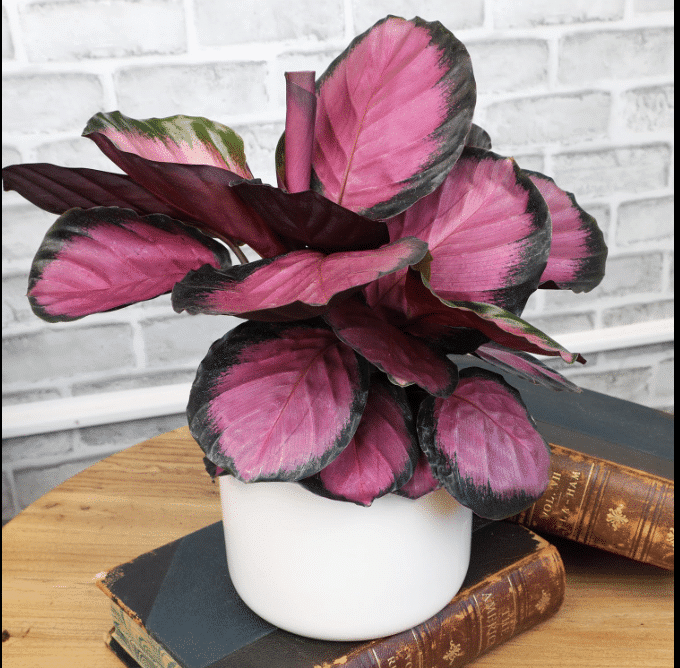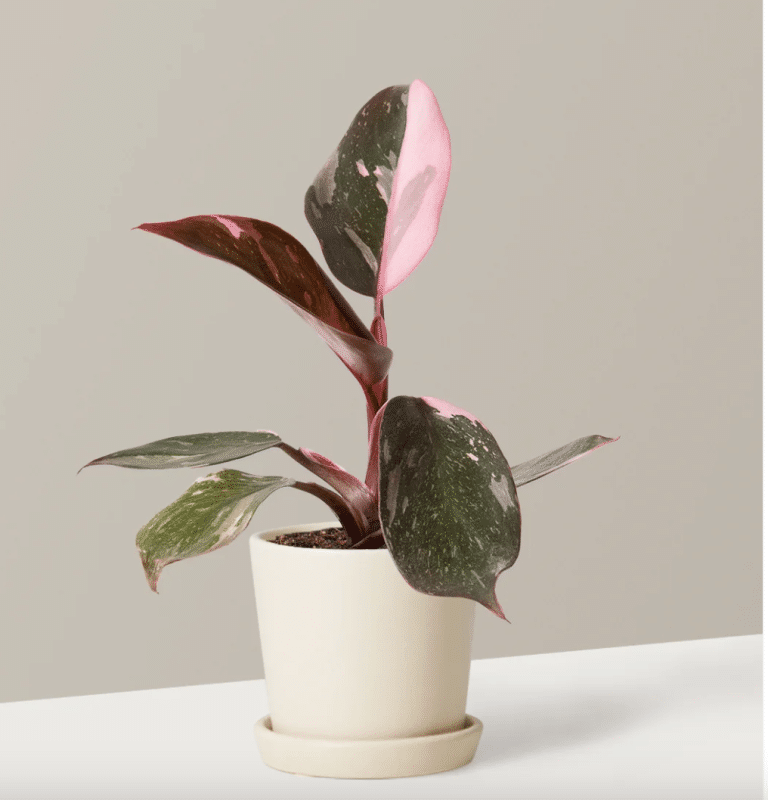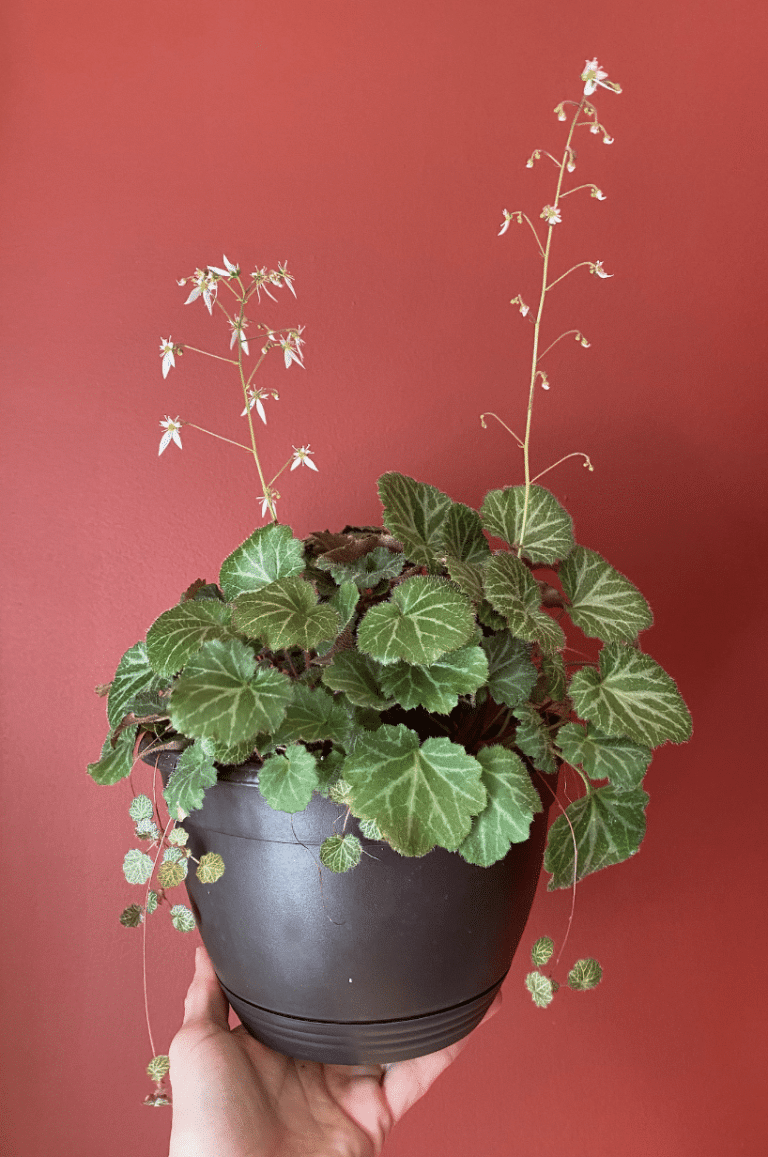Ultimate guide to trellises for trailing houseplants
Explore our recommendations for best trellises for trailing indoor plants we have used in our Brooklyn community home!

When you purchase through links here, we earn an affiliate commission, which helps sustain our blog!
Trailing houseplants don’t have to trail. Sometimes, the best way to show them off—and help them grow fuller—is to give them a trellis to climb.
In this guide, we’ll share the best trellises for trailing houseplants, how to choose the right style for your space, and which plants actually love to climb. Whether you’re growing vines in a small apartment or just want your monstera adansonii to take off, we’ve got you covered!
Summary:
Best hanging baskets for trailing indoor plants
Best Moss Poles

Best Metal trellis

Best jute stake

Best Types of Trellises for Indoor Vines
1. Moss Poles
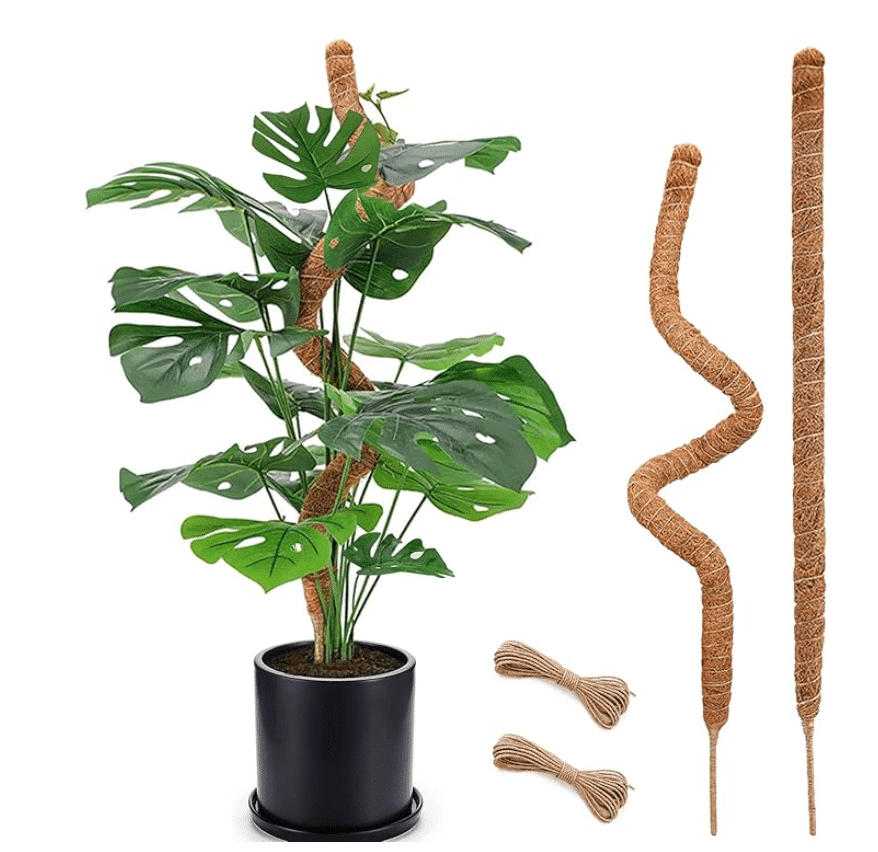
We have this moss pole for our montera and it grew beautifully along. Perfect alignment and looks natural!
2. Bamboo Trellises
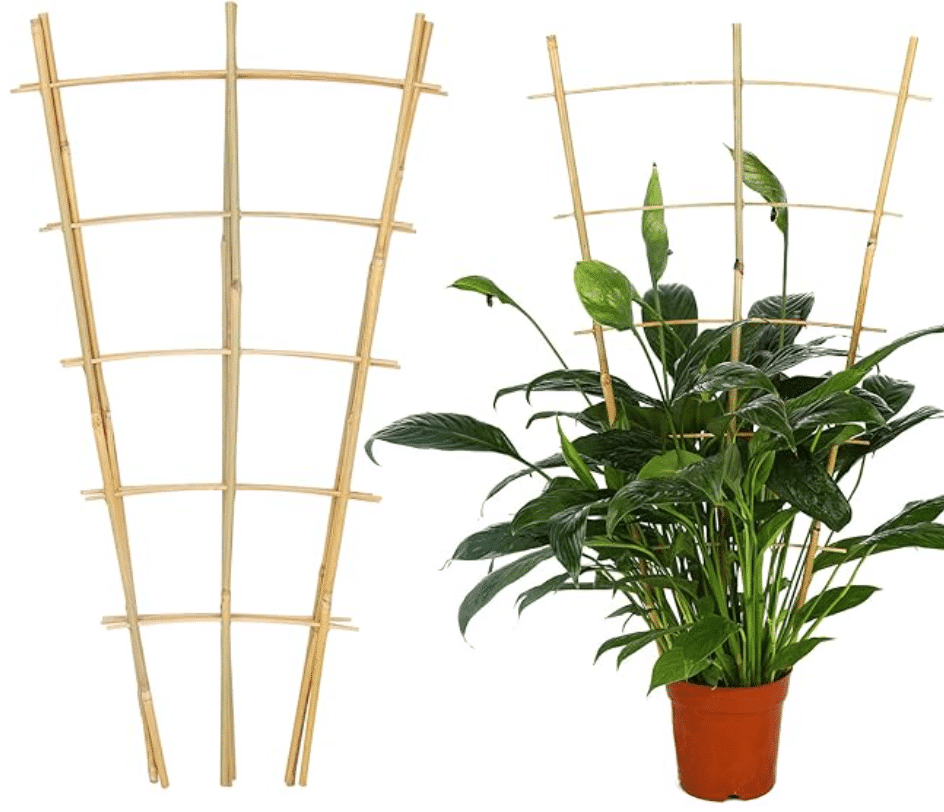
These we tried for a few months, but then resorted to something that felt more natural like moss pole or a more transparent colored metal trellis. But for folx that like this color, this is a very sturdy option
3. Metal Obelisks
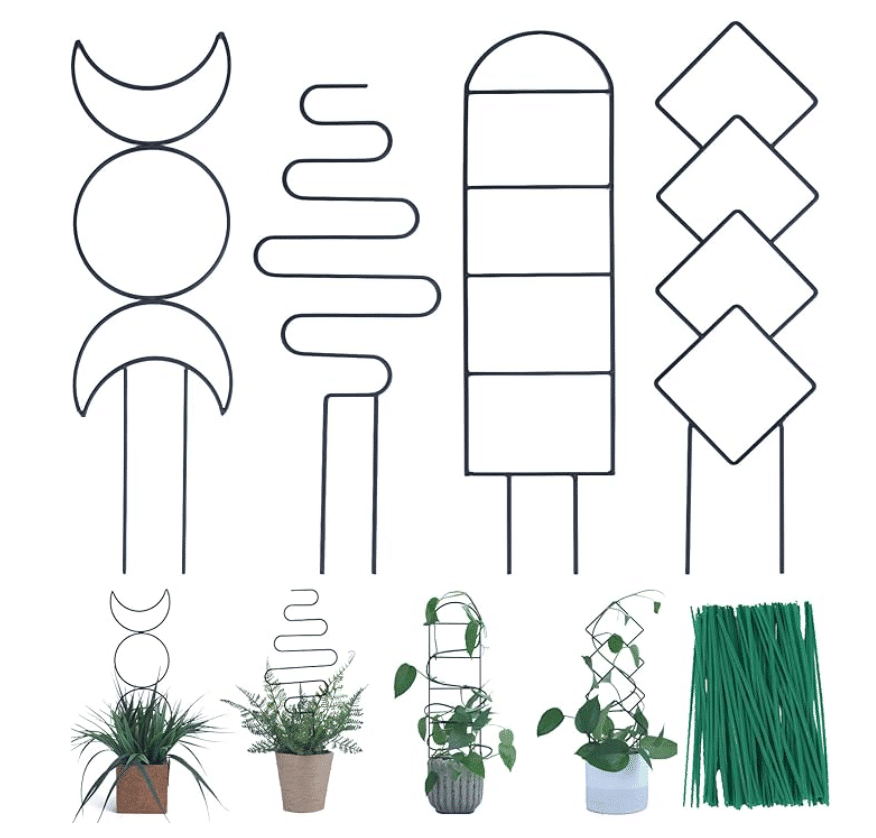
We love using these, especially as the plants grow tall and these stakes have done their job and are invisible to the eyes!
4. Coir or Jute-Wrapped Stakes
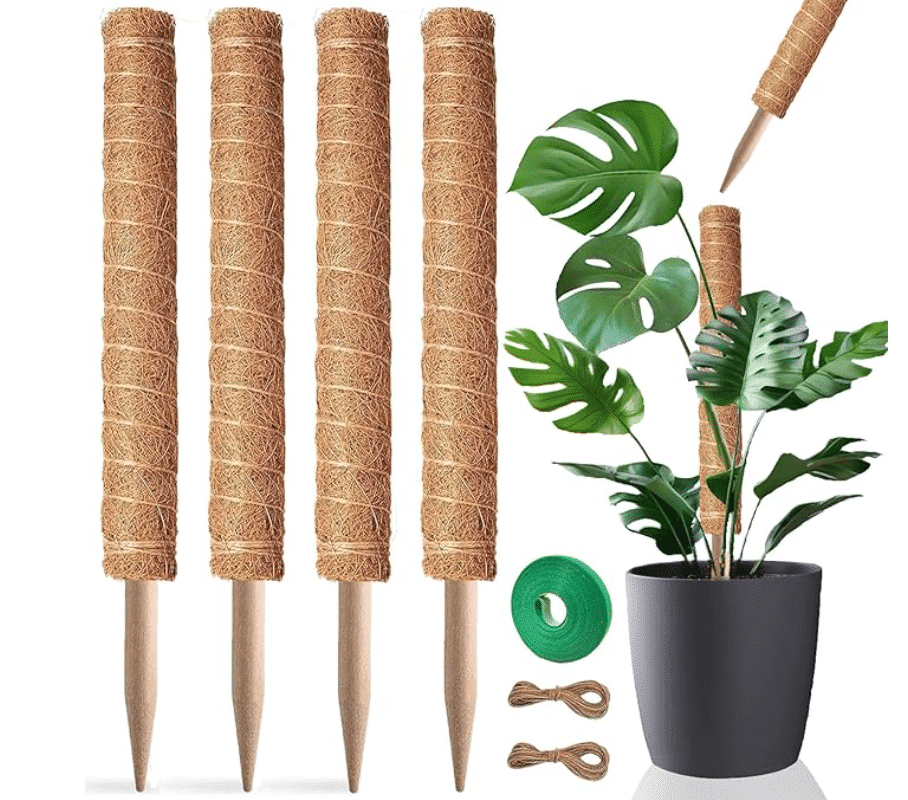
These stakes are just perfect. Natural, and does the job. We love using and re-using these. If you have a bamboo stick handy, you can also buy a coir and wrap it. Though this is a pretty low cost alternative!
top Trailing Houseplants That Can Climb
- Philodendron hederaceum
- Pothos (Epipremnum aureum)
- Monstera adansonii
- String of Hearts (with small wire trellis)
- Hoya varieties (especially pubicalyx and carnosa)
- English Ivy
Read also: Our guide to best soil and fertilizers to trailing indoor plants
How to Choose the Right Trellis for Your Plant
Match Trellis Size with Pot Diameter and Vine Length
A good rule of thumb? The trellis should be about 1.5x the height of the pot and proportionate to the current vine length. If you’re working with short vines or small pots, try a hoop trellis or even chopsticks and twine—it doesn’t have to be fancy to work.
Choose Materials That Match Watering Habits (Coir vs Metal)
Moss poles look gorgeous, but they stay wet—and some plants hate that. Our hoya sulked for weeks because the coir pole we gave it stayed damp and cool all the time. For tropical clingers like philodendrons or monsteras, coir or moss poles are great—they like the humidity. But if your plant prefers dry feet, go for a bamboo, wood, or metal trellis. Just make sure it’s rust-resistant if it’s metal and you water often.
Consider Plant Type: Clingers vs Twining Vines
Not all trailing plants are natural climbers. Philodendrons? They’re clingers. They’ll latch onto moss or bark with aerial roots. Hoyas or string of hearts? Those are twining vines—they like to wrap around wire or thin rods. If you force a twiner to climb a thick moss pole, it’ll just dangle awkwardly (we’ve tried). Know your plant’s climbing style and choose a trellis shape that plays to its strengths.
Think About Available Light and Whether the Trellis Will Block It
We once put a big wall grid trellis in front of a bright window and immediately regretted it. The trellis itself was great—but it cast shadows over our entire shelf. Now, we make sure any upright structure lets light through or is placed off to the side, not smack in front of the sunniest spot. Bonus tip: if you use a moss pole, rotate it every few weeks so all sides get light.
Keep in Mind Your Interior Style—Rustic, Modern, Minimalist
A trellis is functional, sure—but it’s also visual. Woven jute might not match a sleek, modern living room. Likewise, a matte black wire frame might feel too stark for a soft, earthy bedroom vibe. We try to keep our trellises consistent with the room’s style—bamboo for natural warmth, copper or brass for a modern touch, or painted wood for farmhouse charm.
Common Mistakes to Avoid with Indoor Trellises
Using a Trellis Too Large or Heavy for the Pot
We were so excited to try a tall metal obelisk with our pothos that we didn’t think twice about the weight. It looked incredible—until we bumped the shelf and the whole thing tipped over. Twice. That’s when we realized the size and weight of a trellis have to match the pot it’s going into. A 4-inch pot just isn’t going to hold up a steel frame. Now we stick to bamboo hoops or mini arches for small pots, and reserve the heavier trellises for floor planters or wide containers with solid bases.
Ignoring Anchoring—Plants Need to Be Trained and Clipped
Most plants need a little guidance—soft clips, twine, or even reusable Velcro strips. We’ve learned to check the growth every week or so and secure new vines before they wander too far. It only takes a minute, but it makes all the difference in shaping the plant.
Watering Over Moss Poles and Encouraging Mold
Dampen moss poles when the plant actually needs humidity, and let the pole dry out completely between waterings. We also avoid misting directly in low-light rooms where evaporation is slow. It will start to smelly mushy and rotten otherwise — the moss pole, we mean 🙂
Blocking Too Much Light with Wall Trellises
Wall-mounted trellises are a vibe—but not if they’re in the way of your plant’s only light source. Angle trellises off to the side or stick to minimalist frames that don’t cast heavy shadows. If your trellis is blocking more light than your curtains, it’s probably in the wrong spot.
Forcing a Plant to Climb When It Prefers to Trail
We really wanted our string of hearts to climb. But the vines kept slipping off and bending awkwardly. Turns out, some plants are natural trailers and just don’t want to climb. Now we just let our string of hearts spill gracefully from a high shelf, no climbing required.
Read also: our guide to propagating trailing houseplants, and how to grow longer vines.
Conclusion:
Trellises aren’t just for outdoor gardens—they’re a smart, stylish way to elevate your trailing houseplants indoors. Whether you’re working with a windowsill pothos or a statement monstera, the right trellis can make all the difference. Support their growth, guide their direction, and add a vertical pop of green to any space.

